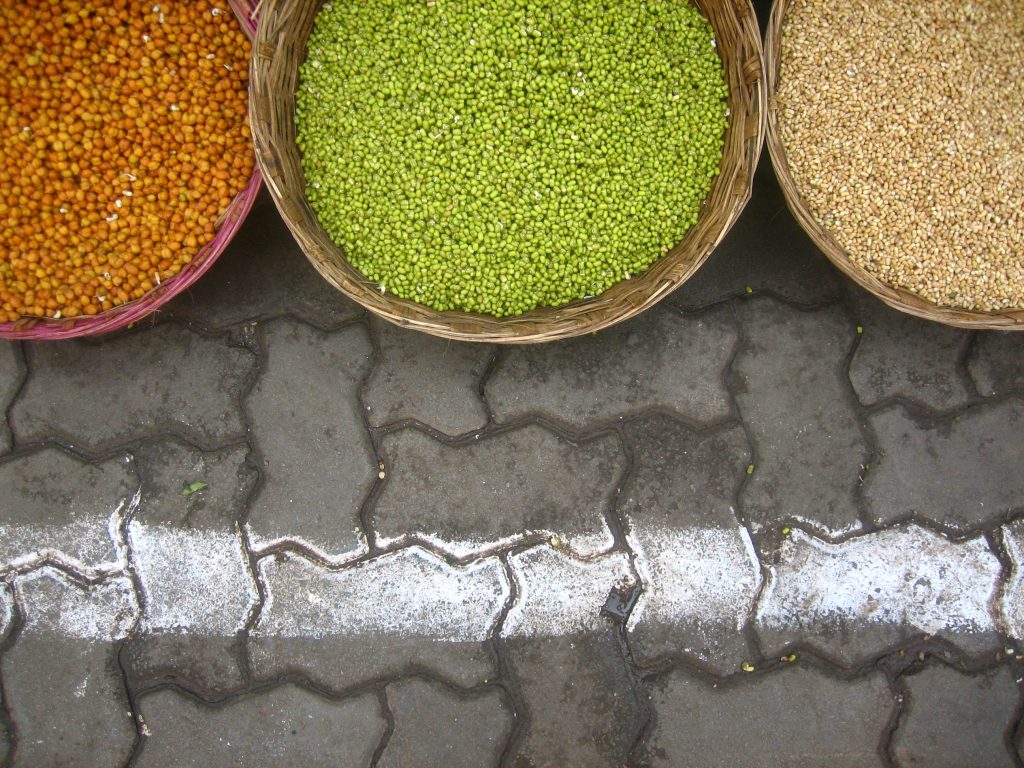Re-directing food systems towards healthy diets: a case for pulses

This principle also holds true when it comes to healthy diets, which by definition include a diversity of foods to ensure nutritional adequacy. While so many of us have been told at some point to “eat your vegetables”, better, more precise advice might be to “eat your vegetables, meats, fish, dairy, nuts and seeds, legumes, and fruits”.
Eating foods from most of these categories on a regular basis increases the potential to meet our complex nutrient needs. Micronutrients, although only required in minute amounts, are essential for healthy growth, immunological function, and cognitive development. Without them, we may not grow as strong or as tall as we might have, nor achieve our full adult potential in terms of education and productivity.
Unfortunately, the global food system – the way food is produced, processed, distributed, marketed and prepared for human consumption – is not doing a good job of facilitating the diverse and healthy diets which assure adequate micronutrient intake. In many parts of the world, highly processed foods of minimal nutritional value are now more ubiquitous than fresh foods. Moreover, the prices of whole, healthy foods relative to unhealthy options have skyrocketed. In the U.S. for example, one dollar now buys 1,200 calories of commercial baked goods at a typical grocery store, and only 250 calories of carrots. Simply put, healthy diets have become less affordable than unhealthy ones. Those who can afford to eat healthily may choose to do so; those who can’t, don’t.
The subject of healthy diets and the need for current global food systems to do a better job in supporting them is increasingly covered by mainstream media. It is also a priority in professional food security and nutrition fora, and indeed more generally with respect to development. SDG 2 – End hunger, achieve food security and improved nutrition, and promote sustainable agriculture – acknowledges the links between agriculture, food systems, and diets, as do the two main outcome documents of the 2014 International Conference on Nutrition (ICN2) (The Rome Declaration on Nutrition and the Frame work for Action)
These documents acknowledge that global food systems are currently not delivering good nutrition to the world’s consumers, and call on governments to make a change, stipulating the need to provide “year-round access to foods that cover people’s nutrient needs and promote healthy dietary practices”. Indeed the Framework for Action includes an entire set of directives on Actions for Sustainable Food Systems Promoting Healthy Diets.
Pulses can contribute to healthy diets
One of the most promising foods for fulfilling these recommendations and improving diets worldwide are pulses. A subgroup of legumes – dried beans, lentils, and chickpeas – pulses are nutritional powerhouses and are being celebrated as such this year, which has been declared by the United Nations General Assembly as the official “International Year of Pulses” (IYP). Most pulses contain about twice the amount of protein found in whole grain cereals, and for most populations in developing countries, constitute the major source of protein, given their low cost relative to animal source foods. They are high in fibre and have a low glycemic index, meaning that they help stabilize blood sugar and insulin, and are high in iron, selenium, zinc, B-vitamins and a number of other micronutrients.
Pulses agricultural and post-harvest properties are also noteworthy: They use much less water than many other crops, have a long shelf life and improve soil fertility, thus reducing the need for chemical fertilizers and producing a smaller carbon footprint.
Despite this extraordinary list of benefits, pulse cultivation and consumption has stagnated in recent decades, largely due to being crowded out of mainstream production systems by cereals such as rice, maize and wheat. FAOSTAT figures from 2014 estimate annual pulse production at 77million tons, compared to 2,250 million tons of cereal.
What can be done to improve production and consumption of pulses? On the supply side, a host of options exist to encourage their production and marketing. A few examples are investment in pulse supply chains, price supports through government procurement programmes, and provision of subsidies on pulse-specific inputs. On the demand side, education and social marketing campaigns promoting the nutritional and health benefits of pulses are essential. As a lead implementer of IYP, FAO has created a website with promotional materials aimed to assist both public and private action along these lines.
Ensuring a flow of international funding in support of pulse research and information exchange is also essential. I hope the Global Panel’s Foresight Project can make room for explicit advocacy for these foods, whose high nutritional value, low price tag, demonstrated health benefits, and small carbon footprint make them a strong contender to help shape the future of food in ways which better contribute to sustainable and healthy diets for all.
